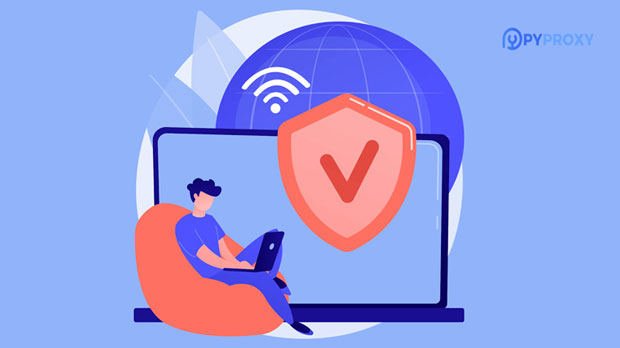Why do I need to check if the IP is a proxy?
In the digital age, ensuring the integrity and security of online activities is paramount. One of the major concerns is the presence of proxy ips, which can obscure the true identity of users. Proxies allow users to mask their actual IP addresses, making it more challenging to detect malicious activity, fraud, or unauthorized access. Whether for e-commerce platforms, security monitoring, or marketing strategies, checking whether an IP is a proxy has become a critical task for businesses. By verifying whether an IP is associated with a proxy, organizations can take proactive steps to ensure the authenticity and safety of online interactions. This article explores the importance of ip proxy checks and the reasons why they are necessary for security and operational efficiency. Understanding Proxies and Their Impact on Online SecurityA proxy server functions as an intermediary between a user's device and the internet. When a user accesses the web, the proxy server sends requests on their behalf, and the response from the internet is sent back through the proxy server before reaching the user's device. The main goal of using proxies is often to conceal the real identity of the user, whether for privacy reasons, to bypass geographic restrictions, or to mask malicious activities.The rise of proxies has a significant impact on online security. On one hand, proxies provide an added layer of privacy and protection, especially for users who are concerned about online tracking or censorship. On the other hand, malicious actors exploit proxies to hide their identity, making it more difficult to trace cybercrimes, fraud, and other harmful activities. In this context, checking whether an IP address is a proxy helps businesses and service providers differentiate between legitimate users and potential threats.Fraud Prevention and DetectionOne of the primary reasons for checking IP addresses for proxies is fraud prevention. Fraudulent activities, such as account takeovers, payment fraud, and fake reviews, often involve the use of proxies to disguise the identity of the perpetrator. By hiding their true location or using a different IP address, fraudsters can bypass detection methods and continue their malicious activities without being identified.For instance, in e-commerce platforms, fraudsters may use proxies to create fake accounts, place fraudulent orders, or steal sensitive data. Similarly, in online voting systems or review platforms, proxy ips can be used to manipulate results, creating a misleading picture of the popularity or trustworthiness of products, services, or individuals.By identifying proxy ip addresses, businesses can block suspicious users, prevent fraudulent transactions, and maintain the integrity of their platforms. In the context of financial transactions or account security, the detection of proxy IPs serves as a proactive measure to protect both businesses and customers from potential financial losses.Enhancing Website Security and Preventing CyberattacksAnother crucial reason for checking IPs for proxies is to protect against cyberattacks. Proxies can be used to launch Distributed Denial of Service (DDoS) attacks, brute-force attacks, or other forms of cyber intrusion. Attackers often use proxy networks to distribute the load of these attacks across multiple IP addresses, making it harder to trace and stop the malicious activity.For example, a DDoS attack might involve sending a massive number of requests to a website from a variety of proxy IPs, overwhelming the server and causing it to crash. This can disrupt services, damage reputations, and lead to significant financial loss. Detecting and blocking proxy IPs helps to mitigate the risk of such attacks and ensures that the website remains operational and secure.In addition to DDoS attacks, proxies can be used to bypass security measures like firewalls and geographic restrictions. By disguising their IP address, attackers can evade detection and gain unauthorized access to restricted areas of a network or system. Checking IP addresses for proxies enables security teams to identify such attempts and prevent potential breaches.Protecting Marketing Strategies and Customer DataFor businesses relying on online marketing, detecting proxy IPs is crucial to ensuring the accuracy of marketing data and preventing fraudulent interactions. Bots and proxies can be used to inflate website traffic, click-through rates, or engagement metrics, giving businesses a false sense of their marketing campaign's success. This can lead to wasted marketing budgets and misguided strategies based on inaccurate data.For instance, ad fraud is a growing concern in the digital advertising industry. Proxies can be used by fraudsters to simulate legitimate clicks or impressions, inflating the performance of ads and misleading advertisers. By identifying proxy IPs, businesses can eliminate these fraudulent activities and ensure that their marketing data reflects genuine user behavior.Moreover, the protection of customer data is a major concern. Proxies can be used to scrape websites for valuable customer information, such as pricing details, product listings, or personal data. In this case, proxy detection helps to safeguard sensitive customer information and prevent unauthorized data scraping or breaches.Regulatory Compliance and TrustworthinessMany industries are subject to regulations that require businesses to protect user data, prevent fraud, and ensure transparency in their operations. For example, the General Data Protection Regulation (GDPR) in Europe mandates that companies take appropriate measures to protect customer privacy and prevent unauthorized access to personal data. Detecting proxy IPs plays a crucial role in maintaining compliance with such regulations.In addition, trustworthiness is a key factor in building and maintaining customer relationships. Customers expect businesses to safeguard their information and ensure that online interactions are secure. By actively monitoring for proxy IPs, businesses can demonstrate their commitment to data security, fraud prevention, and customer protection, thereby fostering trust and loyalty among their user base.Optimizing Network Performance and Resource ManagementFinally, checking IP addresses for proxies can help optimize network performance and resource management. Proxies can consume significant network resources, especially if they are used for malicious purposes such as scraping or launching attacks. By identifying and blocking proxy IPs, businesses can ensure that their servers and networks are not overloaded, thus improving overall performance and user experience.In some cases, businesses may also use proxies for legitimate purposes, such as accessing region-specific content or enhancing privacy. In these situations, monitoring and analyzing proxy usage can help organizations manage resources effectively, ensuring that legitimate users are not impacted by malicious traffic.ConclusionIn conclusion, checking if an IP address is a proxy is essential for maintaining the security, integrity, and efficiency of online operations. Whether it's preventing fraud, protecting against cyberattacks, ensuring accurate marketing data, complying with regulations, or optimizing network performance, the ability to detect proxy IPs provides businesses with the tools needed to safeguard their digital environments. As online threats continue to evolve, proactive monitoring and verification of IP addresses will remain a cornerstone of effective online security strategies.
2025-02-04

























































